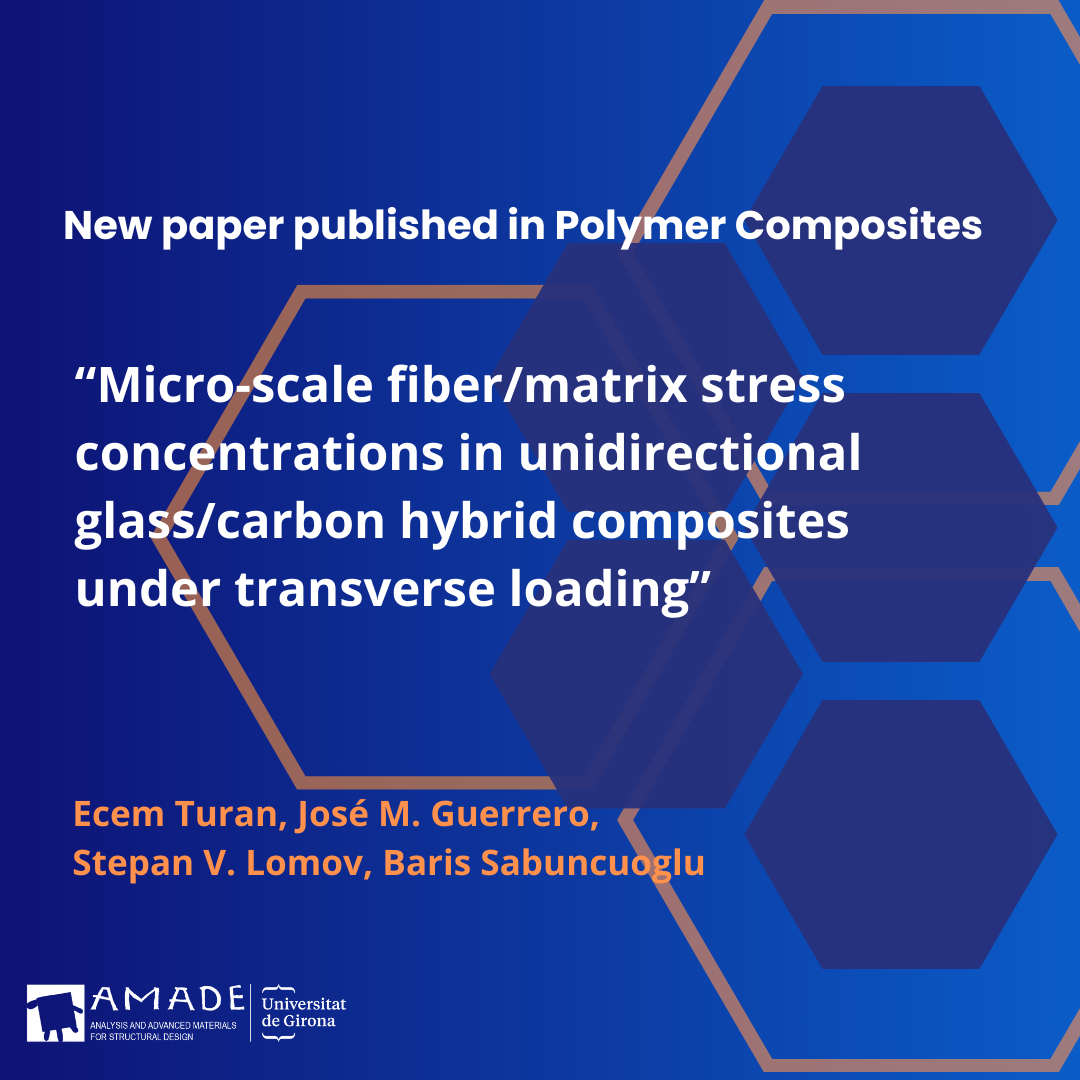
23 Abr New Paper on Micro-Scale Stress Concentrations in Hybrid Composites
A researcher from AMADE (José Manuel Guerrero), in collaboration with researchers from Turkish Aerospace Industry (Ecem Turan), Hacettepe University (Ecem Turan and Baris Sabuncuoglu) and KU Leuven (Stepan V. Lomov), has published a new paper in Polymer Composites, titled:
“Micro-scale fiber/matrix stress concentrations in unidirectional glass/carbon hybrid composites under transverse loading”
Research Overview
The study focuses on the behavior of hybrid fiber-reinforced composites, specifically examining how interface stresses and micro-scale stress concentrations (SCs) develop at the fiber/matrix interface under transverse and shear loading conditions. Using advanced finite element modeling techniques, the research explores:
- The effect of different combinations of fiber materials (glass and carbon), diameters, volume fractions, and spatial distributions
- The influence of hybridization compared to non-hybrid configurations on the stresses
- The use of multiple Representative Volume Elements (RVEs), including hexagonal, random, and triple arrangements
- The role of fiber alignment in stress distribution
- The evolution of stress concentrations under transverse and shear loads
Key Findings
- The replacement of softer fibers with stiffer ones can either increase or decrease SCs depending on fiber position and loading direction.
- Higher fiber volume ratios enhance hybridization effects, leading to increased SCs around certain fibers.
- Debonding behavior at the fiber/matrix interface is highly sensitive to fiber arrangement and hybrid configuration.
These insights provide valuable guidance for optimizing hybrid composite designs to improve durability and prevent failure.
You can read the full article here:
This research was supported by:
- The Scientific Research Projects Coordination Unit of Hacettepe University (Project No. 19721)
- The Margarita Salas Postdoctoral Fellowship [REQ2021_A_15]



